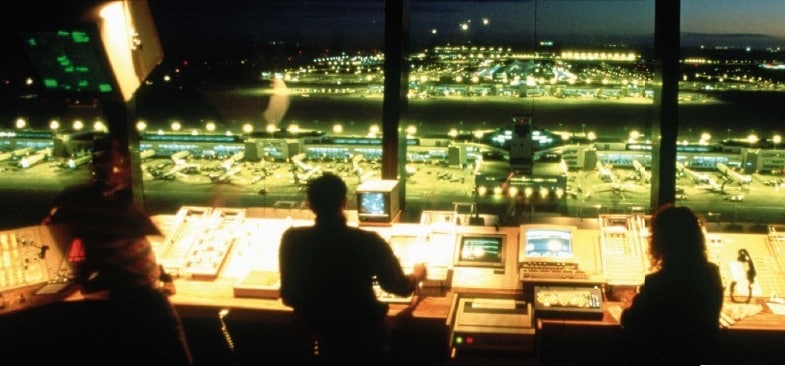The Federal Aviation Administration on Wednesday announced measures to try to avoid a repeat of disruptions at airports serving New York City and Washington D.C. this summer as it grapples with a shortage of air traffic controllers at a key facility in the area.
Despite this, the FAA said it expects increased delays this summer compared with last year, projecting a 45% rise in delays with operations growing 7%.
Now more than ever, airlines are going to have to get inventive in finding new ways to ease disruptions if they want to win over their customers and remain competitive in light of the major chaos set to ensue this summer.
On March 22, 2023, the FAA issued this notice of limited waiver of the Slot Usage Requirement:
Staffing Related Relief Concerning Operations at Ronald Reagan Washington National Airport, John F. Kennedy International Airport, LaGuardia Airport, and Newark Liberty International Airport, May 15, 2023, through September 15, 2023.
This notice announces a limited, conditional waiver of the minimum usage requirement that applies to Operating Authorizations or “slots” at John F. Kennedy International Airport (JFK), New York LaGuardia Airport (LGA), and Ronald Reagan Washington National Airport (DCA) due to post-pandemic effects on Air Traffic Controller (ATC) staffing at the New York Terminal Radar Approach Control (TRACON) facility (N90).
Carriers will be permitted to voluntarily turn in up to 10 percent of
their slots held at JFK and LGA as well as impacted slots at DCA for the period from May 15, 2023, through September 15, 2023, subject to the conditions and limitations in this notice.
In addition, this notice announces a limited policy for prioritizing returned operations at Newark Liberty International Airport (EWR) due to post-pandemic effects on ATC staffing at N90 for purposes of establishing a carrier’s operational baseline in the next corresponding season.
Carriers will be permitted to voluntarily turn in up to 10 percent of their approved operating timings at EWR for the period from May 15, 2023, through September 15, 2023, subject to the conditions and limitations in this notice. Carriers seeking to take advantage of this relief must identify the slots and approved operating timings they wish to turn in 2 before April 30, 2023.
This relief is being provided to give carriers the ability to reduce operations during the peak summer travel period, which are likely to be exacerbated by the effects of Air Traffic Controller (ATC) staffing shortfalls.
DATES: This action is effective upon publication
Background
The New York Terminal Radar Approach Control facility (N90) provides ATC services to overhead flights in the North East corridor and to the New York airports — JFK, LGA, and EWR. The airspace complexity resulting from the close proximity of the major commercial airports serving the New York City region is a significant contributing factor to delays at JFK, LGA, and EWR.
Against this already challenging backdrop, according to FAA data, nationwide Certified Professional Controller (CPC) staffing averages 81 percent while N90 is maintained at about 54 percent of its CPC staffing target.
FAA acknowledges that temporary safety mitigations put in place in response to the COVID-19 pandemic impacted controller training. Dedicated training initiatives have been successful in reducing most of the training backlog with the exception of N90.
The staffing shortfalls at N90 limit the FAA’s ability to provide expeditious services to aircraft operators and their passengers that traverse this airspace.
During the period of May 2022 through September 2022, the total number of instances of delay to operations from JFK, LGA, and EWR totaled 41,498, with effects throughout the NAS and for which
staffing was a contributing factor. Notwithstanding FAA’s efforts to address N90 CPC staffing, the staffing rate for N90 has not improved and at the same time early carrier schedules indicate an increase in operations. This being the case, for summer 2023 the FAA expects increased delays in the New York region over summer 2022. Specifically, ATO modeling indicates operations at the New York airports is projected to increase by seven (7) percent, which FAA projects will result in overall delays increasing by 45 percent.
These projections are consistent with the 50 percent increase in the number of ground delay programs (GDPs) observed in January and February 2023 compared to the same months in 2022 at
the same airports.
The FAA is progressing towards a solution to the N90 staffing issues, based on moving responsibility for the Newark, New Jersey radar sector from N90 to the Philadelphia TRACON (PHL). Training for this sector move is slated to begin in September of this year and will take time to complete for cutover of responsibilities to PHL. Accordingly, this solution will not resolve the anticipated operational impacts in the summer 2023 scheduling season.
Decision
The FAA has determined the post-pandemic effects on N90 staffing meets the applicable waiver standards and warrants a limited waiver of minimum slot usage requirements at JFK and LGA to allow carriers to return up to 10 percent of their slots at each airport voluntarily as well as impacted operations between DCA and the New York airports.
In addition, the FAA has determined the post-pandemic effects on N90 staffing warrants a limited policy for prioritizing returned operations at EWR to allow carriers to return 10 percent of their approved operating timings voluntarily, for purposes of establishing a carrier’s operational baseline in the next corresponding season.
Carriers wishing to return their slots and approved operating timings voluntarily must do so before April 30, 2023 to be eligible for this waiver. If carriers participating in this limited waiver at EWR subsequently operate unapproved flights at that airport, those carriers will forfeit their scheduling preference to an equal number of returned approved operating timings chosen at the FAA’s discretion for the subsequent equivalent traffic season.
Additionally, any other relief from minimum slot usage requirements or standard level 2 processes already in effect at JFK, LGA, or EWR will factor into the 10 percent of allowable returns. In other words, any returns made under a relief policy already in effect when this notice is published will count towards the carrier’s 10 percent of allowable returns. Further, the FAA encourages carriers to up-gauge aircraft serving the affected airports to the extent possible to maintain passenger throughput and minimally impact consumers.
The FAA will not reallocate the returned slots or approved operating timings at JFK, LGA, or EWR, as the goal is to reduce the volume of operations in the New York region. Carriers are encouraged to utilize their DCA slots in other markets before returning them to the FAA. In the event DCA slots are returned under this waiver, other carriers will have an opportunity to operate the slots on an ad hoc basis without historic precedence to serve markets other than New York.
The FAA will treat as used the specific slots returned in accordance with the conditions in this notice for the period from May 15, 2023, through September 15, 2023.
The relief is subject to the following conditions:
- The specific slots and approved operating timings must be returned to the FAA before April 30, 2023.
- This waiver applies only to slots that have corresponding, scheduled operations during the period of the grant. A carrier temporarily returning a slot to FAA for relief under this waiver must identify corresponding scheduled operation. FAA may validate information against published schedule data as of March 14, 2023, and other operational data maintained by FAA. Slots returned without an associated scheduled and cancelled operation will not receive relief. Slots or approved operating timings newly allocated for initial use before October 28, 2023, are not eligible for relief.
- Slots authorized at DCA by Department of Transportation or FAA exemptions are not eligible
for relief.





